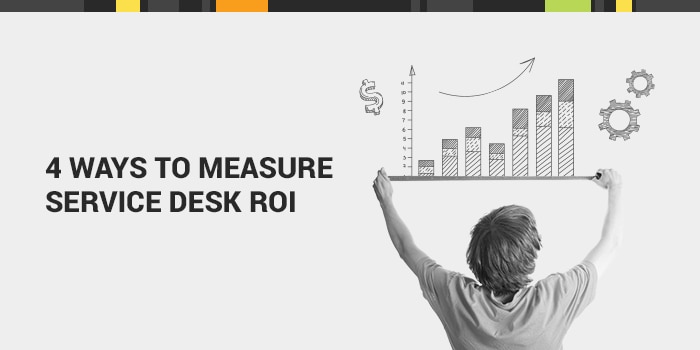For IT professionals, it can be difficult to determine how much time to allocate for high-priority tasks that can actually move the needle in a growing business.
Unfortunately, a little too much time can be spent on mundane tasks — sometimes as a consequence of an outdated IT service management (ITSM) solution — that could easily be automated.
In this blog, I’ll break down 4 different ways you can start measuring the return on investment (ROI) of your service desk.
Streamlined Employee Feedback Through CSAT Surveys
Encouraging feedback from employees can be crucial for
improving customer satisfaction (CSAT) scores and identifying what process improvements may be needed.
We can collect real-time feedback from our users. When they’re dissatisfied, it’s nice to have someone follow up to make it right.” –John Sudduth, Director of IT at MWRD
The first step is to create a survey that employees will be likely to take the time to complete. That means it should be short and simple. One question is fine:
Are you satisfied?
These surveys can be automated for every ticket resolution, and the data can help you identify areas for improvement. More importantly, it can track your team’s success over time, measuring the impact of your service strategy in one of the most crucial areas: employee experience.
Availability of Complete and Accurate Reporting
Manually generating reports at the end of each month or quarter can be a tedious process.
Whether you are reporting on incidents resolved, CSAT, or any other
service desk metrics that are important for your team, scheduling reports is one of the best ways to stay up to date with what’s going on without wasting time on third-party reporting tools or spreadsheets.
Another time-saving benefit of automated reporting is the ability to set triggers that deliver reports on a recurring basis for, say, Directors and other C-level executives.
The easier you can make this data available to stakeholders, the easier it can be to make important decisions and reduce guesswork.
Customizable SLAs to Increase Visibility
It’s critical that your team members have a clear picture of service delivery expectations.
Service level agreements (SLAs) are a powerful tool that can help you measure performance, drive accountability, and identify necessary escalations.
SLAs can identify open tickets, who is responsible, and what steps need to be taken to help your team reduce response times, avoid breaches, and keep employees happy.
Smart Technology for Reducing Time-Consuming Tasks
AI-powered suggestions within the service desk can also be tremendously helpful for improving metrics like time-to-resolution and first-touch resolution.
Artificial Intelligence
One example of artificial intelligence in a service desk context is the ability to use keywords to trigger smart suggestions (like knowledge base articles) to requesters. This can help relieve the burden on technicians that can result if employees commonly open tickets that could be resolved via self-service. Another benefit of AI for both requesters and technicians is that it can suggest categories and subcategories for tickets, helping ensure submissions contain the right data to facilitate ticket automations.
Other time-saving strategies being adopted and deployed throughout many organizations include the use of automations, and even chatbots for Level 1 or 2 support.
Automations
Important, yet tedious, tasks like ticket routing and priority can be simplified by setting up
ticket automation rules that limit the need for back-and-forth communication between multiple parties. Take the AI-powered categories and subcategories mentioned above for example. With the help of AI, requesters don't need to worry if their ticket is a "software" or "applications" issue.
Accurate categories and subcategories help facilitate automation rules, so that if a ticket is submitted with the "software" category, it can be automatically routed to the appropriate technician to resolve. By setting up these simple automations, employees and technicians can spend their time doing their jobs instead of sending back and forth emails.
The Bottom Line
Determining the service desk metrics and capabilities that can make your employees most efficient should be part of the ROI-positive equation. How can you bring this to life for your organization? Here are
five companies seeing big returns in service desk ROI.
 hbspt.cta.load(41925, 'ffc37b75-7f99-408d-9647-d20feb4843f9', {});
hbspt.cta.load(41925, 'ffc37b75-7f99-408d-9647-d20feb4843f9', {});  hbspt.cta.load(41925, 'ffc37b75-7f99-408d-9647-d20feb4843f9', {});
hbspt.cta.load(41925, 'ffc37b75-7f99-408d-9647-d20feb4843f9', {}); 



